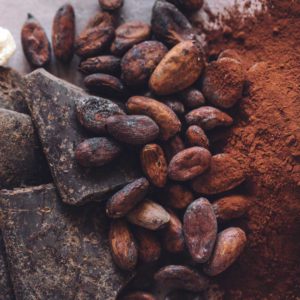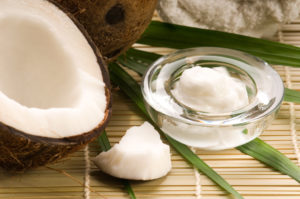From time to time we get categorical comments from people about the harmfulness of using coconut oil because it smokes on high heat, therefore it is very harmful to health.
Indeed, the smoke point of an oil is the temperature at which the oil reaches its boiling point and begins to form harmful compounds. But it is not the main indicator of harm or benefit of oil. Oils with a high smoke point can be more stable and healthier for cooking than those with a low smoke point.
Along with the smoking indicators of edible oils, nutritionists usually take into account:
- chemical composition and indicators of HNE
- stability (including heat resistance)
- the level of fat saturation (the same mono- and polysaturated and unsaturated fats in foods that are often confused)
The level of HNE (4-hydroxynonenalene) – compounds that are formed by the oxidation of lipids in the cells and tissues of living organisms or in food products during their processing and storage
An immediate example – a small amount of HNE is present in products of animal origin (in milk and meat), which cannot directly have a fatal effect on the human body, unless you have congenital or acquired food intolerance to these groups of products. But a high level of HNE is closely related to the pathogenesis of many diseases, such as atherosclerosis, diabetes, oncology and neurodegenerative disorders.
If we translate this into the plane of oil use, then the longer you heat the oil, or if you reuse it (as is done in fast food establishments and in the process of cooking on an industrial scale), the more hydroxynonenal the oil accumulates, that is, the more damage it causes to the human body . HNE can start to build up after just one use of the oil, and reheating it to high temperatures can cause HNE levels to increase. Here’s another reason to limit the use of fried food.
Oxidative stability of oil is reflected in the levels of fat saturation in edible oils
The stability of the oil depends on the density of the fatty acid chains in the oil composition – the stronger the links, the less they break when heated, while forming free radicals.
Oils with saturated fatty acids are the best choice for cooking. They usually include: olive and coconut oil, avocado oil. They have a high smoke level, but are stable, because the fatty acids in them have strong chain links – that is, these types of oils tolerate high temperatures well.
According to recent studies, coconut and olive oil almost do not change their chemical composition (that is, they do not release harmful levels of carcinogens) when heated to a temperature of 180°C for one day (!)
On the other hand, oils with polyunsaturated fats do not smoke, but after a few minutes or hours they become quite harmful to the human body. Such oils include: corn, sunflower, rapeseed, linseed, soybean and safflower. By their structure, these are unstable fats, so when heated, they can form higher levels of free radicals. But this does not mean that these oils are prohibited for use at all. No! It’s just that they are recommended to be used in moderate quantities and preferably without heating – that is, simply add to dishes, for example, to salads. Homemade fragrant sunflower oil is so delicious!
According to the materials: The Health Sciences Academy









